View in other NatureServe Network Field Guides
NatureServe
Montana
Utah
Wyoming
Idaho
Wisconsin
British Columbia
South Carolina
Yukon
California
New York
Douglas Spiraea - Spiraea douglasii
General Description
Stems 1–2 m, pilose, becoming brown, glabrous. Leaf blades 2–8 cm long, glabrous, paler beneath, serrate on the upper half. Inflorescence a conical, pilose panicle 4–20 cm long. Flowers: sepals hairy to glabrous, 0.5 mm long; petals pink or rose, ca. 1.5 mm long. Follicles 2–3 mm long (
Lesica et al. 2012. Manual of Montana Vascular Plants. BRIT Press. Fort Worth, TX).
Diagnostic Characteristics
Pyramidal Spiraea is a natural hybrid between
Spiraea douglasii var.
menziesii and
Spiraea betulifolia var.
lucida, which are all present in Montana.
Douglas Spirea –
Spiraea douglasii, native:
* Inflorescence is cone-shaped, at least three times longer than broad.
* Flowers are pink to rose.
* Montana’s variety is
menziesii.
Pyramidal Spiraea –
Spiraea x
pyramidata, native hybrid:
* Inflorescence is cone-shaped, about as long as broad or up to twice as long as broad.
* Flowers are pink-tinged.
White Spirea –
Spiraea betulifolia, native:
* Inflorescence is flat-topped to hemispheric, broader than long.
* Flowers are white.
* Leaves are glabrous.
* Montana’s variety is
lucida.
Rose Meadowsweet –
Spiraea splendens, native:
* Inflorescence is flat-topped to hemispheric, broader than long.
* Flowers are rose.
* Leaves are hairy on the margins.
Source: Lesica et al. (2012).
Species Range
Montana Range
Range Descriptions
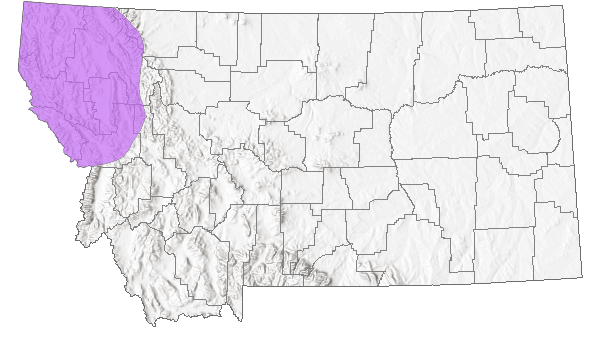
 Native
Native
Range Comments
Southeast AK to CA and ID.
Observations in Montana Natural Heritage Program Database
Number of Observations: 181
(Click on the following maps and charts to see full sized version)
Map Help and Descriptions
Relative Density
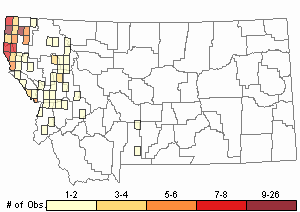
Recency
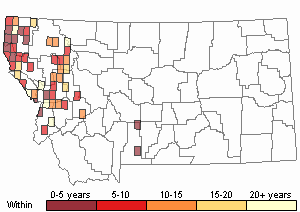

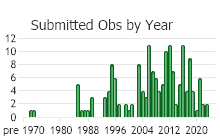
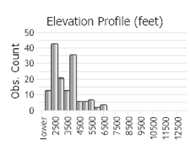 (Observations spanning multiple months or years are excluded from time charts)
(Observations spanning multiple months or years are excluded from time charts)
Habitat
Ecology
POLLINATORS The following animal species have been reported as pollinators of this plant species or its genus where their geographic ranges overlap:
Bombus vagans,
Bombus auricomus,
Bombus fervidus,
Bombus nevadensis,
Bombus ternarius,
Bombus griseocollis, and
Bombus impatiens (Macior 1968, Heinrich 1976, Colla and Dumesh 2010, Colla et al. 2011, Koch et al. 2012).
Stewardship Responsibility
References
- Literature Cited AboveLegend:
 View Online Publication
View Online Publication Colla, S., L. Richardson, and P. Williams. 2011. Bumble bees of the eastern United States. Washington, DC: USDA Forest Service, Pollinator Partnership. 103 p.
Colla, S., L. Richardson, and P. Williams. 2011. Bumble bees of the eastern United States. Washington, DC: USDA Forest Service, Pollinator Partnership. 103 p. Colla, S.R. and S. Dumesh. 2010. The bumble bees of southern Ontario: notes on natural history and distribution. Journal of the Entomological Society of Ontario 141:39-68.
Colla, S.R. and S. Dumesh. 2010. The bumble bees of southern Ontario: notes on natural history and distribution. Journal of the Entomological Society of Ontario 141:39-68. Koch, J., J. Strange, and P. Williams. 2012. Bumble bees of the western United States. Washington, DC: USDA Forest Service, Pollinator Partnership. 143 p.
Koch, J., J. Strange, and P. Williams. 2012. Bumble bees of the western United States. Washington, DC: USDA Forest Service, Pollinator Partnership. 143 p. Lesica, P., M.T. Lavin, and P.F. Stickney. 2012. Manual of Montana Vascular Plants. Fort Worth, TX: BRIT Press. viii + 771 p.
Lesica, P., M.T. Lavin, and P.F. Stickney. 2012. Manual of Montana Vascular Plants. Fort Worth, TX: BRIT Press. viii + 771 p. Macior, L.M. 1968. Bombus (Hymenoptera, Apidae) queen foraging in relation to vernal pollination in Wisconsin. Ecology 49:20-25.
Macior, L.M. 1968. Bombus (Hymenoptera, Apidae) queen foraging in relation to vernal pollination in Wisconsin. Ecology 49:20-25.
- Additional ReferencesLegend:
 View Online Publication
View Online Publication
Do you know of a citation we're missing? Lesica, P., M.T. Lavin, and P.F. Stickney. 2022. Manual of Montana Vascular Plants, Second Edition. Fort Worth, TX: BRIT Press. viii + 779 p.
Lesica, P., M.T. Lavin, and P.F. Stickney. 2022. Manual of Montana Vascular Plants, Second Edition. Fort Worth, TX: BRIT Press. viii + 779 p. Thompson, Scott K. 2002. Browse condition and trend on Montana ungulate ranges. M.Sc. Thesis. Bozeman, MT: Montana State University. 147 p.
Thompson, Scott K. 2002. Browse condition and trend on Montana ungulate ranges. M.Sc. Thesis. Bozeman, MT: Montana State University. 147 p.
- Web Search Engines for Articles on "Douglas Spiraea"





